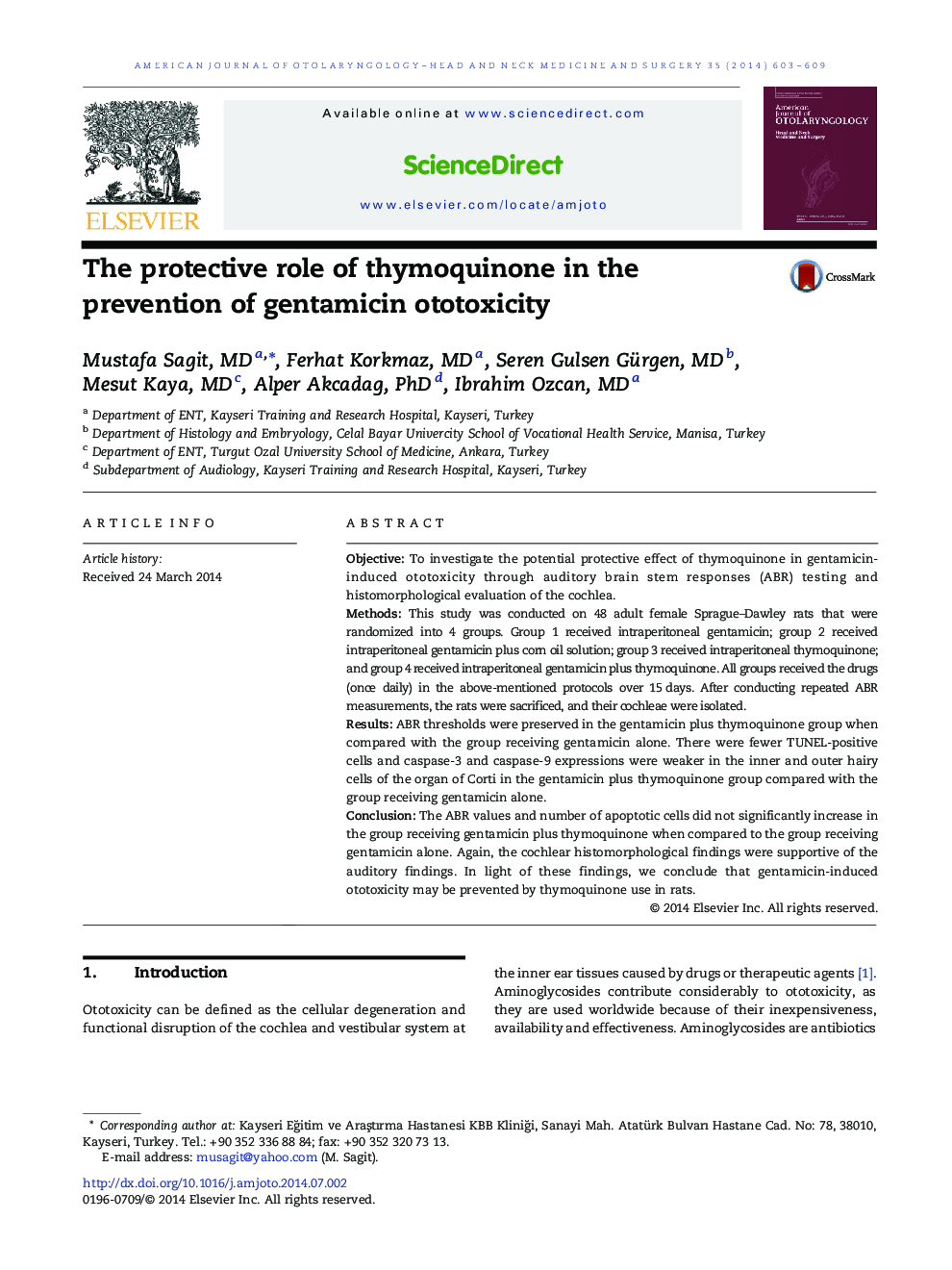| Article ID | Journal | Published Year | Pages | File Type |
|---|---|---|---|---|
| 4103352 | American Journal of Otolaryngology | 2014 | 7 Pages |
ObjectiveTo investigate the potential protective effect of thymoquinone in gentamicin-induced ototoxicity through auditory brain stem responses (ABR) testing and histomorphological evaluation of the cochlea.MethodsThis study was conducted on 48 adult female Sprague–Dawley rats that were randomized into 4 groups. Group 1 received intraperitoneal gentamicin; group 2 received intraperitoneal gentamicin plus corn oil solution; group 3 received intraperitoneal thymoquinone; and group 4 received intraperitoneal gentamicin plus thymoquinone. All groups received the drugs (once daily) in the above-mentioned protocols over 15 days. After conducting repeated ABR measurements, the rats were sacrificed, and their cochleae were isolated.ResultsABR thresholds were preserved in the gentamicin plus thymoquinone group when compared with the group receiving gentamicin alone. There were fewer TUNEL-positive cells and caspase-3 and caspase-9 expressions were weaker in the inner and outer hairy cells of the organ of Corti in the gentamicin plus thymoquinone group compared with the group receiving gentamicin alone.ConclusionThe ABR values and number of apoptotic cells did not significantly increase in the group receiving gentamicin plus thymoquinone when compared to the group receiving gentamicin alone. Again, the cochlear histomorphological findings were supportive of the auditory findings. In light of these findings, we conclude that gentamicin-induced ototoxicity may be prevented by thymoquinone use in rats.
